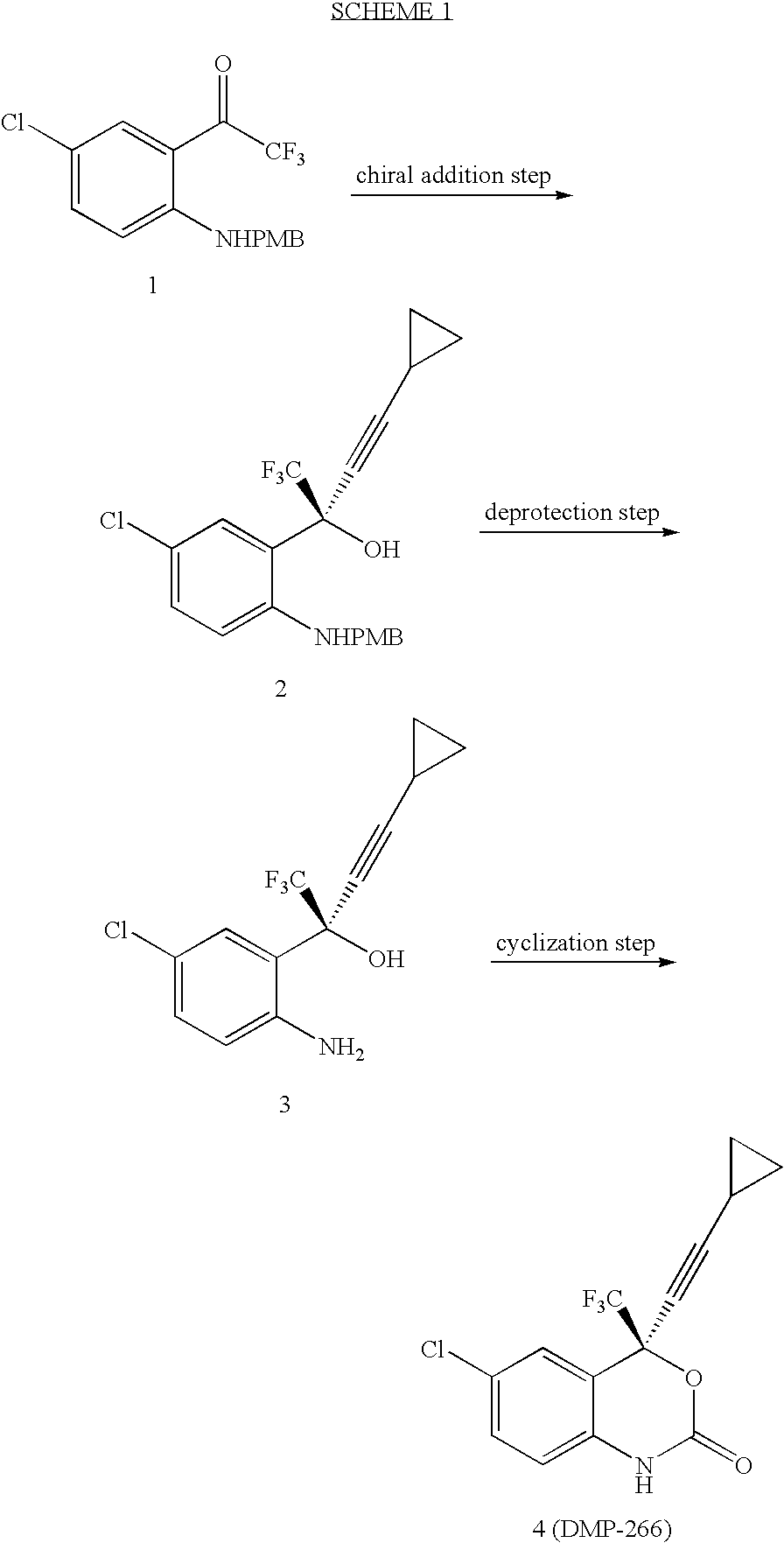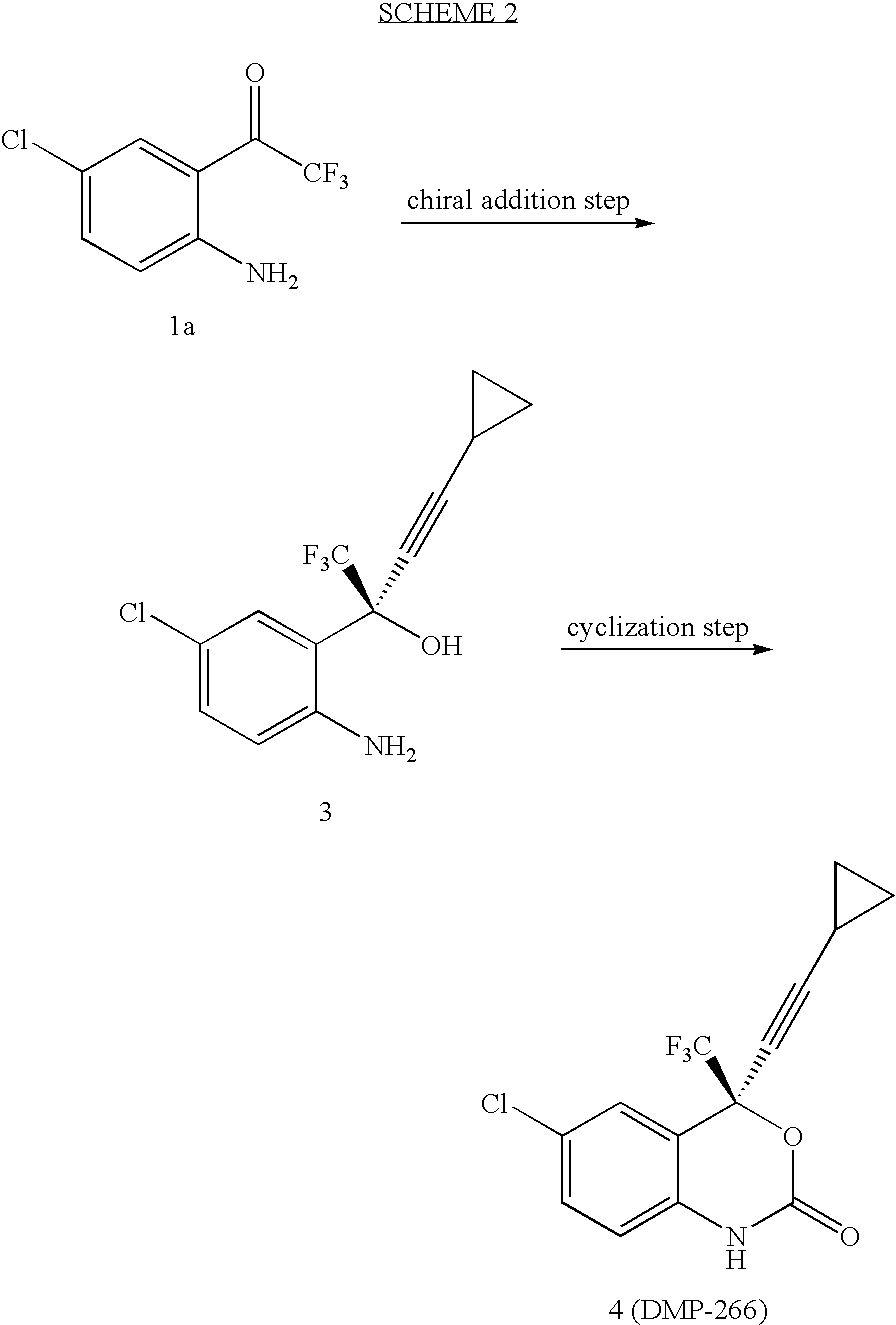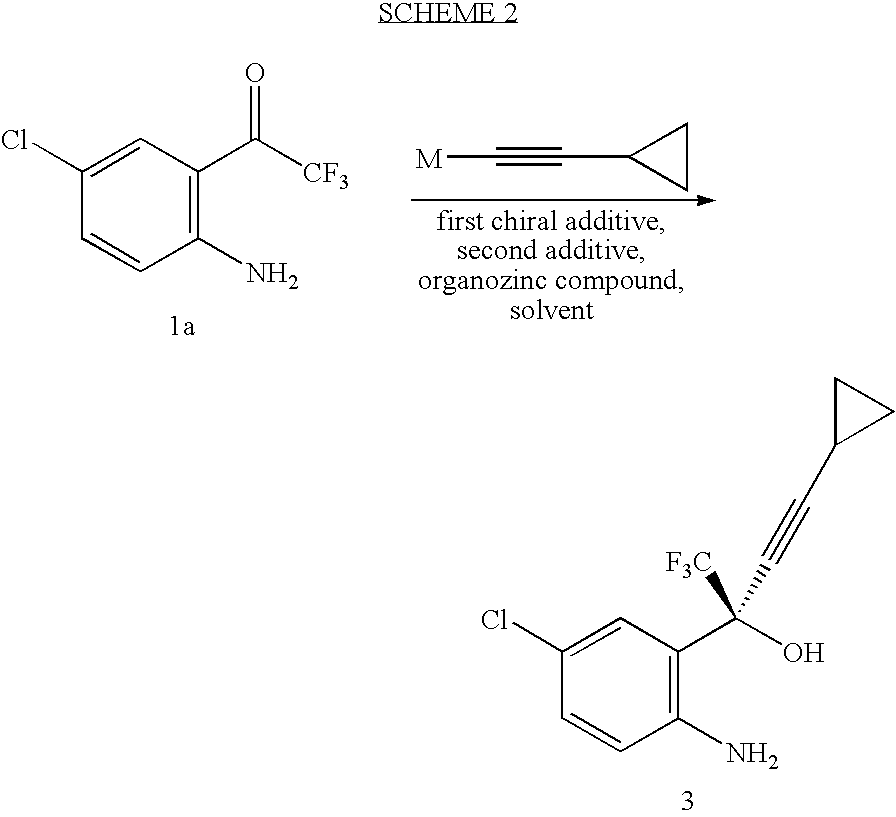Compressed tablet formulation
a tablet and formulation technology, applied in the direction of dragees, organic active ingredients, coatings, etc., can solve the problems of drug loss, difficult management of compressed tablet form,
- Summary
- Abstract
- Description
- Claims
- Application Information
AI Technical Summary
Benefits of technology
Problems solved by technology
Method used
Image
Examples
example 1
[0058]
MaterialsAmountMolMWKetone 1a1.00kg4.47223.58(1R, 2S)-N-pyrrolidinyl norephedrine1.35kg6.58205.30cyclopropyl acetylene361.9g5.4766.10n-BuMgCl (2.0 M in THF)2.68L5.372,2,2-trifluoroethanol (99%)429.5g4.29100.04ZnEt2 (0.892 M in hexane)6.02L5.37THF9.36L30% K2CO3550mL30% citric acid2.0LToluene (for crystallization, 2 mL / g of 4)2.6LHeptane (for crystallization, 4 mL / g of 4)5.2L
[0059] To a solution of trifluoroethanol and (1R, 2S)-N-pyrrolidinyl norephedrine in THF (9 L) under nitrogen is added a solution of diethylzinc in hexane at 0° C. slowly enough to keep the temperature below 30° C. The mixture is stirred at room temperature for 0.5˜1 h. In another dry flask a solution of chloromagnesium cyclopropyl acetylide is prepared as follows: To neat cyclopropyl acetylene at 0° C. is added a solution of n-butylmagnesium chloride slowly enough to keep the internal temperature ≦30° C. The solution is stirred at 0° C. for ˜40 min and transfered to the zinc reagent via cannula with 0.36 L ...
example 2
[0060]
FWgmLmmolequivamino alcohol 328910034614-nitrophenylchloroformate201.673.23631.05KHCO3100454501.32N KOH563466922.0H2O654MTBE500
[0061] To a three necked round bottom flask, equipped with a mechanical stirrer, nitrogen line, and thermocouple, was charged the solid amino alcohol 3, MTBE (500 mL), and aqueous KHCO3 (45 g in 654 mL H2O). Solid 4-nitrophenyl chloroformate was added, in 4 batches, at 25° C. During the addition the solution pH was monitored. The pH was maintained between 8.5 and 4 during the reaction and ended up at 8.0. The mixture was stirred at 20-25° C. for two hours. Aqueous KOH (2N) was added over 20 minutes, until the pH of the aqueous layer reached 11.0.
[0062] The layers were separated and 500 mL brine was added to the MTBE layer. 0.1 N Acetic acid was added until the pH was 6-7. The layers were separated and the organic phase was washed with brine (500 mL). At this point the mixture was solvent switched to EtOH / IPA and crystallized as recited in Examples 5 a...
example 3
[0063]
FWgmLmmolequivamino alcohol 3a2891003461phosgene (20 wt% in toluene)99412164151.2KHCO310086.58652.5H2O500Toluene500
[0064] To a three necked round bottom flask, equipped with a mechanical stirrer, nitrogen line, and thermocouple, was charged the solid amino alcohol 3a, toulene (500 mL), and aqueous KHCO3 (86.5 g in 500 mL H2O). Phosgene solution in toulene was added at 25° C., and the mixture was stirred at 20-25° C. for two hours.
[0065] The layers were separated and the organic phase was washed with brine (500 mL). At this point the mixture was solvent switched to EtOH / IPA and crystallized as recited in Examples 5 and 6.
PUM
| Property | Measurement | Unit |
|---|---|---|
| temperature | aaaaa | aaaaa |
| temperature | aaaaa | aaaaa |
| temperature | aaaaa | aaaaa |
Abstract
Description
Claims
Application Information
 Login to View More
Login to View More - R&D
- Intellectual Property
- Life Sciences
- Materials
- Tech Scout
- Unparalleled Data Quality
- Higher Quality Content
- 60% Fewer Hallucinations
Browse by: Latest US Patents, China's latest patents, Technical Efficacy Thesaurus, Application Domain, Technology Topic, Popular Technical Reports.
© 2025 PatSnap. All rights reserved.Legal|Privacy policy|Modern Slavery Act Transparency Statement|Sitemap|About US| Contact US: help@patsnap.com



